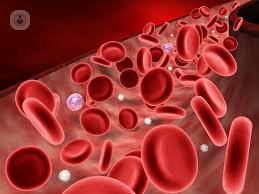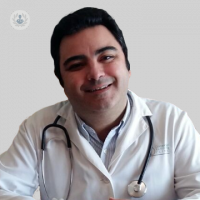Know what is blood, what is formed and what is its function
Written by:Blood is a tissue that circulates through capillaries, veins and arteries. It consists of a liquid phase, plasma, consisting of proteins, and a cell portion in which white blood cells, red blood cells and platelets are immersed. The function of blood is vital as it defends against infections and is involved in gas exchange and distribution of nutrients to all organs of the body.

Blood: what it is
The blood (Latin: sanguis, INIS) is a connective tissue fluid flowing through capillaries, veins and arteries of all vertebrates. The color red is caused by the presence of hemoglobínico pigment contained in red blood cells.Blood consists of a liquid phase, represented by blood plasma, where the formed elements or cells that include leukocytes (white blood cells) and cell derivatives formed by erythrocytes (or blood cells) and platelets are immersed .Its main function is the logistics of distribution and systemic integration, whose containment in the blood vessels supports its distribution (blood circulation) to almost the entire body.
What it is blood and where it originates
Blood, as explained by experts in hematology , serves multiple functions necessary for life, such as the defense against infections, exchanges of gases (oxygen-carbon dioxide) and distribution of nutrients.To fulfill all these functions has different types of cells suspended in plasma. It should be noted that all the cells that make up blood are made in the bone marrow. This is in cancellous bone tissue planes (skull, vertebrae, sternum, iliac crests) and the medullary canals of long bones (femur, humerus).
Blood is a tissue in constant renewal in the human body, which means that the bone marrow is manufacturing, throughout life, blood cells, as they have a limited time of life. This "factory" in certain situations of need, can increase production. For example, before a bleeding increases to seven times the production of red blood cells and, to an infection increases the production of white blood cells.
What blood it is composedLike any tissue, blood consists of cells and extracellular components. These two tissue fractions are represented by:
• The formed elements: represented by cells and cell - derived components.• Blood plasma: a translucent yellowish liquid fluid representing the extracellular matrix in which are suspended the formed elements.The formed elements constitute about 45% of blood. Such percentage magnitude is known hematocrit ( "cellular" fraction), ascribable almost entirely to the red cell mass. The other 55% is represented by the blood plasma (acellular fraction).
Formed elements of the blood are varied in size, structure and function, and are grouped into:• Blood cells, which are white blood cells or leukocytes are cells that are "pass" through the blood to fulfill their function in other tissues.• Cell derivatives, which are not strictly cells but cell fragments are erythrocytes and platelets. They are the only blood components that perform their duties strictly within the vascular space.
Blood cells:1) White blood cells (leukocytes). They are part of the immune system cells. These cells with migratory capacity using blood as a vehicle to access different parts of the body. They are responsible for destroying infectious agents and infected cells. In addition, they secrete protective substances such as antibodies, which fight infection. The normal white blood cell count is between 4,500 and 11,500 cells per mm³ (microliter) of blood, which varies according to the physiological conditions (pregnancy, stress, sport, age ...) and pathological (infection, cancer, immunosuppression, aplasia, etc.). According to the microscopic characteristics of their cytoplasm (staining) and core (morphology) are divided into:1.1 Agranulocytes or monomorphonuclear cells. Are lymphocytes and monocytes. No granules in the cytoplasm and have rounded nucleus:a) Lymphocytes. The normal value is between 1,300 and 4,000 per mm³ (from 24 to 32% of total white blood cell). Their number increases in viral infections and cancers and may decrease in immunodeficiencies. They are responsible for making the task of the immune system. There are two kinds:- Lymphocytes B: They are responsible for the secretion of antibodies (substances that recognize the bacteria, joining them to destroy). They are also the cells responsible for producing blood serum components called immunoglobulins.- T Lymphocytes: They are responsible for recognizing cells infected by viruses and destroying them, with the help of macrophages. These lymphocytes amplify or suppress the overall immune response, regulating the other components of the immune system. They constitute 70% of lymphocytes.b) Monocytes. The normal count is between 150 and 900 cells per mm³ (2 to 8% of all white blood cells), a figure that rises infections caused by viruses or parasites, but also in some tumors and leukemias. They are defined nucleus cells.1.2 granulocytes or polymorphonuclear cells. Are neutrophils, basophils and eosinophils. These cells with polymorph core and many granules in the cytoplasm.a) Neutrophils. They are present in the blood between 2,500 and 7,500 cells per mm. They are the most numerous, occupying between 55 and 70% of leukocytes. They are responsible for capture and digest foreign substances (bacteria or external agents) that enter the body. When there is an infection or swelling their numbers increase in the blood.b) Basophils. They are present in the blood between 0.1 and 1.5 cells per mm³ (0.2- 1.2% of leukocytes). Secrete substances such as heparin (anticoagulant properties) and histamine (which contributes to the process of inflammation).c) Eosinophils. They are present in the blood between 50 and 500 cells per mm³ (1-4% of leukocytes). Increase in diseases caused by parasites, allergies and asthma.
Derived cell:1) Red blood cells (erythrocytes). They are in the blood and carry oxygen to other cells. In humans are formed in the bone marrow. They constitute approximately 96% of figurative elements. Its normal value is around 4,800,000 in women and approximately 5,400,000 in males, red blood cells per mm³. They are cells themselves, as they lack core (expel it in the bone marrow before entering the bloodstream). Their cytoplasm is composed almost entirely by hemoglobin, a protein responsible for transporting oxygen, and also contains enzymes.2) Platelets (thrombocytes). They are small, oval and coreless cell fragments. They are produced in the bone marrow from the cytoplasm fragmentation of megakaryocytes, and are free in the circulation. Normal value ranges between 250,000 and 450,000 platelets per mm³. Platelets are used to plug the injuries that could affect blood vessels, blood coagulating. Thus, when a circulatory vessel ruptures the wound involving platelets to decrease the size and prevent bleeding. In the coagulation process platelets form clots (thrombi) and are responsible for vascular wound closure (thrombosis). To get an idea, a drop of blood contains about 250,000 platelets.
Moreover is blood plasma which is the liquid portion of the blood where the elements are immersed aforementioned formes, comprising 91% water, 8% protein and traces of other materials. It is the major component of blood and accounts for 55% of total blood volume. Besides transporting blood cells, carries nutrients and waste substances collecting cells.Within 8% of proteins it contains are: amino acids, carbohydrates, lipids, salts, hormones, enzymes, antibodies, urea, dissolved gases and inorganic, such as sodium, potassium, chloride, calcium carbonate and substances bicarbonate. Also among these proteins they are:- Fibrinogen (for coagulation)- Globulins (regulate the water content in the cell and form antibodies against infectious diseases)- Albumins (exert osmotic pressure to distribute water between plasma and body fluids)- Lipoprotein (damped changes in pH of blood and cells, and make the blood more viscous than water)


